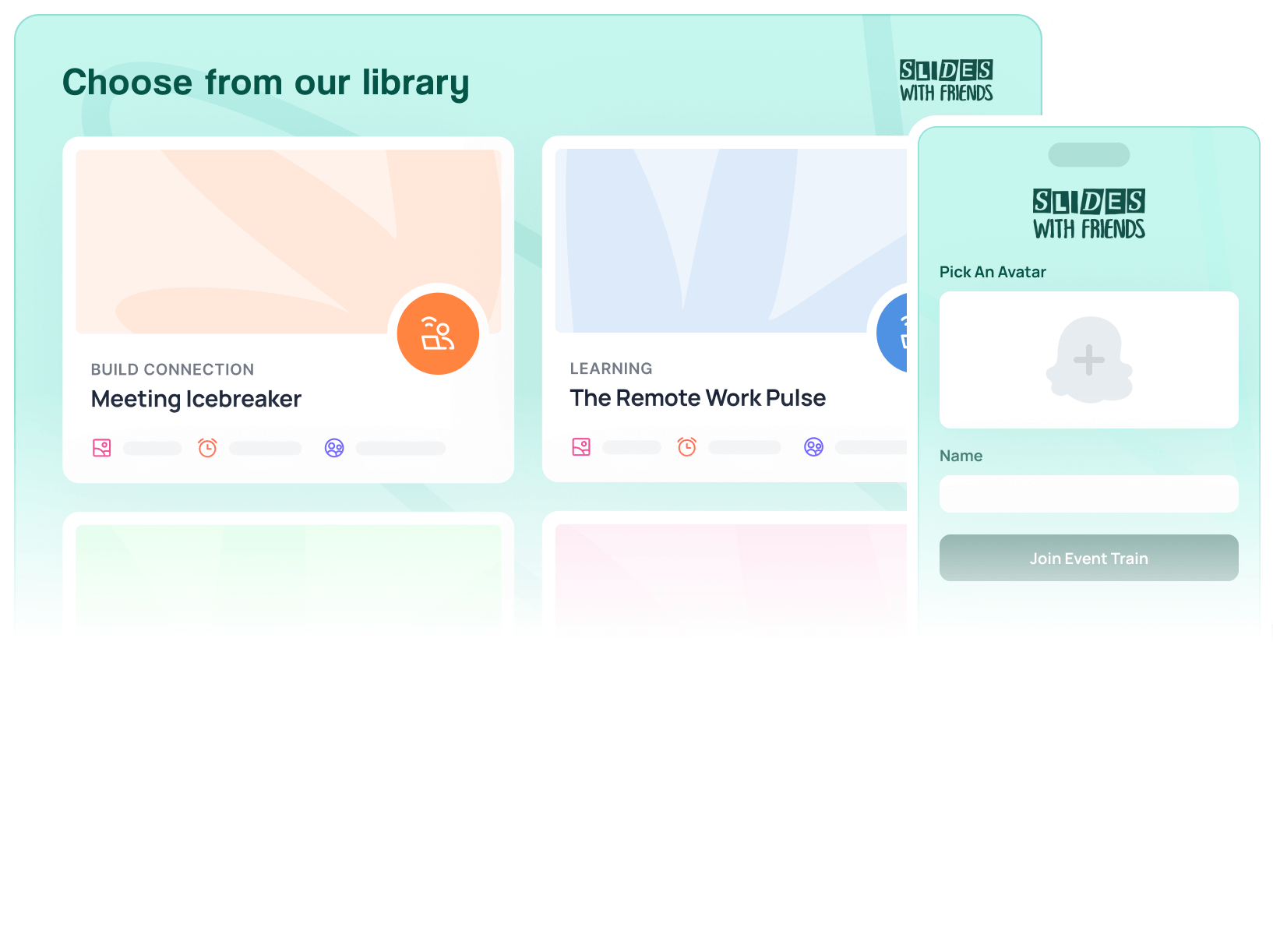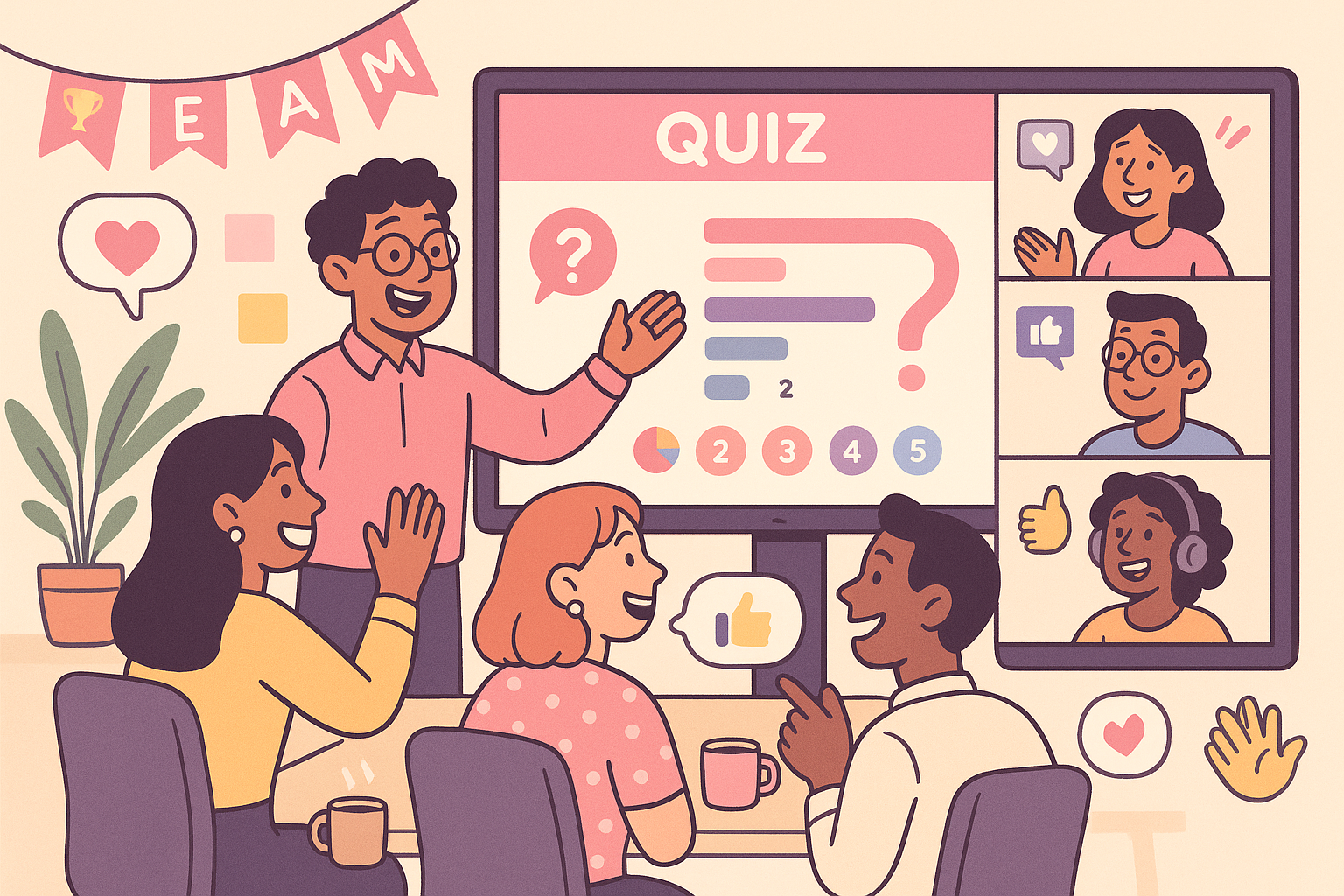How to Engage Uninterested Students: 6 Ways that Really Work
Want to engage the kids sitting in the back (of the classroom or Zoom room) who never raise their hands? Here are six ways, each with helpful, actionable examples for you to perk up even the most glassy-eyed students.

Few things cause an educator’s heart to sink like the sight of a disengaged student. Head down, texting on a device, or with body language indicating that the mind is elsewhere – the telltale signs of an uninterested student are difficult not to take personally.
While we can expect all students to arrive to class tired, on low energy, or “off” at some point, more frequent signs of disinterest may reveal that the structure and content of a teacher’s lessons fail to pique students’ curiosity and move them into that state of flow, in which they become completely absorbed with a stimulating task at hand.
Within this problem lies an opportunity – the chance for an educator to try novel methods for captivating students’ attention. Ahead, we’ve listed six of the best ways to engage uninterested students, along with effective tools to help educators accomplish each suggestion.
#1 Use interactive tools
Are your students’ cell phones your greatest competitor? Instead of constantly nagging students to put their phones away, use devices to get students to participate!
Interactive tools are great because they appeal to a wide range of students – they can help rambunctious students channel their energy into the lesson while also and drawing participation from less vocal groups. Additionally, they can serve as an incentive for students who are motivated by opportunities to collaborate. Teachers can offer low-stakes formative assessments to gauge student progress.
Here are some great tools you can use to easily add interactivity to your lessons:
- Slides with Friends lets you create slide decks (like you would in Powerpoint or Google Slides) for your lessons — but these slide decks are interactive. Your students would join in on their phones and send in quiz answers, word cloud submissions, votes for other students' content, pictures, and so much more. It makes getting live feedback a cinch, and fun too.
For example, if the goal is to prompt self-evaluation, provide Likert scale responses for students to reflect on (i.e., Strongly Disagree, Disagree, Neither Agree nor Disagree, Agree, or Strongly Agree). Or, use a poll to collect evidence regarding which concepts students have mastered and which ones they struggle to grasp. Or get simple, yet valuable feedback or assesment, like by simply having them rate out of emoji how much they liked the lesson, or how they're feeling.

- Kahoot! is useful if you want to review important concepts at the recall/recognition level. The leaderboard displays the top three performers in real-time, as well as students who are “on fire” (making three or more consecutive correct answer selections). Kahoot has a higher price tag than some of these others, so keep that in mind while getting started.
- Quizlet Live can help you prompt small groups of students to make comparisons and evaluations. The more correct answers they choose, the closer their mascot gets to the “finish line.” Watch out, though! The collaborative element is critical – if students decide on an incorrect choice, they must start back at the beginning!
Interactive tools can also facilitate the use of positive reinforcement. Specific praise from a teacher sends the message to a student that someone is paying attention and invested in their progress.
Good examples of ways to give praise:
- For a student who completes their assignment early: “I like how you took the time to review your work and check for mistakes before turning it in.”
- For a student who hesitates to participate in class: “You asked a great question in class today – it prompted many of your peers to reconsider their thinking and consider their blind spots.”
- For a student who usually has trouble staying in their seat: “Thank you for being mindful to not disrupt your classmates’ concentration when you quietly stood to take a stretch break.”
We also know that intrinsic rewards (such as meaningful praise and opportunities for greater autonomy) are usually more effective at achieving sustained progress than extrinsic rewards.
“Intrinsic motivation is typically a more effective long-term method for achieving goals and completing tasks in a way that makes you feel fulfilled. While extrinsic motivation is helpful in certain situations, it may eventually lead to burnout or lose effectiveness over time.”
Phil Sennett, “Understanding Intrinsic and Extrinsic Motivation”

#2 Build anticipation at the start of a lesson
Have you ever wondered why movie theaters spend the first 15-20 minutes highlighting trailers? Previewing the most exciting parts of a film – or lesson, for that matter – builds excitement. Within a classroom, it is imperative that teachers create a sense of intrigue, curiosity, or positive tension within the first several minutes of class.
“Anticipating the future allows allocating [of] cognitive and emotional resources and [behavioral] planning strategies to cope with upcoming events.”
Yangmei Luo, et. al., “Well-being and Anticipation for Future Positive Events: Evidence from an fMRI Study”
Let’s look at two different classrooms. Our first class shows their lack of engagement by acting out, interrupting, or arguing with one another. While these behaviors are disruptive, the teacher can harness the energy and channel it into the lesson.
Ways to build anticipation:
- Let each student speak briefly on a topic— and let them know their turn is coming up. You can use simple methods and frameworks for this, like "Show & Tell" or a
Pass the Mic" icebreaker format with a prompt (give them a topic to speak on based on your lesson, or to just do a fun or silly ice breaker, see a giant list of great icebreaker prompts to use in this blog). If you want to make running this type of interactive conversation a little easier on yourself, there are tools! You can create an interactive presentation that has a live "photo sharing" option, that lets your students "show and tell" using images from their camera roll (like, "show us a pic of something delicious you ate recently!"). Or you can automatically "Pass the mic" using a SlidesWith slide that simply calls on each student in turn and gives them a set amount of time to speak.

- Initiative a vote on a somewhat controversial or interesting topic using Mentimeter. For example, when learning about the three branches of government in the United States, a teacher might ask, “Which branch – legislative, executive, or judicial – is the most important branch of government?” After collecting live responses, the teacher can call upon several students to defend their responses before launching into the core of the lesson. This strategy can help talkative students channel their energy into the lesson.
- On the other hand, let’s consider a class that makes their disinterest known through reticence, low energy, or boredom. Teachers can use sites like Padlet to display a sentence starter or essential question on the board, enabling less-vocal students to participate anonymously and in written form. For example, if the class is learning about imposter syndrome, a teacher can ask them to talk about moments when they felt like “an imposter.” After reviewing all of the written submissions, the teacher can select certain responses and ask the class, as a whole, to take the discussion further.
- Alternatively, an educator can play an intriguing YouTube clip designed to elicit a written response that students can then share with an elbow partner. If the topic is relatively unfamiliar, the teacher can ask students to discuss what they notice, what they are curious about, or what they agree/disagree with.
- Try running a little competition! Announce a quiz — and announce some high-value prizes (anything from a lollipop for the younger kids to a "get out of a paper free" pass for your college students). Create a multiple choice or "type in your answer" interactive quiz with a few different rounds, and show scores as you progress. Be sure to build in a tie breaker for any nail biters that happen!
#3 Offer multiple options for learning
Today’s classrooms are increasingly made up of diverse learners – diverse both in how they learn best and how they are best suited to show what they know.
“Between 2000 and 2017, the percentage of 5- to 17-year olds who were White decreased from 62 to 51 percent, while the percentage who were Hispanic increased from 16 to 25 percent.”
Cris de Brey, “New Report Shows Increased Diversity in U.S. Schools, Disparities in Outcomes”
While writing a one-paragraph response might be a great way for one student to convey their new understandings, other students are better able to explain themselves orally, visually, or through physical representations.
Student options for demonstrating mastery:
- Use an "Apples to Apples" type format to introduce some gameplay and levity into a lesson. Use tools to make this a little easier if you've got more than a few students in your class or if you're remote. For example, you can use a SlidesWith "User Vote" slide in any deck, which lets students send in a response to your prompt, and displays all the responses to the group without revealing who said what. Then players can vote on one answer they like best, but of course not their own answer.
- For students who prefer to talk out their understanding, Flipgrid has quickly emerged as a favorite app. It allows participants to create videos where they answer a prompt, reflect on their learning, or respond to their peers’ contributions. Similar to popular social media apps like Instagram, TikTok, and Snapchat, Flipgrid users can add filters, emojis, and written comments in addition to video and image responses.

- For students who are less vocal and prefer to express their understanding through writing, set up a scenario where they can travel among three to four stations and share their responses to written questions using Post-It notes. For example, one station might ask them to share their greatest takeaway from the lesson while another prompts them to reflect on something they want to continue investigating.
- For kinesthetically-oriented students, use the four corners of the classroom as multiple-choice options for them to move to when you read out a question. For example, if the class is studying the parts of a cell, the teacher might ask, “Which part of the cell is considered to be the ‘powerhouse’?” Students could move to one of four corners representing four answer choices: nucleus, mitochondria, chromosomes, or cell membrane.
- Try live quizzing for the more competitive to shine.
Giving students greater autonomy in directing their own learning is certainly achievable without creating more work for the teacher. We suggest limiting a menu of formative or summative assessments to 3-4 choices, with each one representing a different way of approaching content or demonstrating mastery.
#4 Prioritize and publish goal-setting
Holding students accountable is another tried and true way to increase their level of engagement. Regardless if goals are related to mastering content, improving skills, or reducing problematic behaviors, the act of prioritizing those goals and making them transparent to the class can hold students accountable to themselves and each other.
Ways to keep goals and progress visible:
- Use Google Sheets or Docs to create charts that keep track of student improvement. At the end of each class or week, students can reflect on their progress and set goals for the future. Teachers can add comments to the document that follow up on student reflections.
- Display visual evidence of progress using Slides with Friends’ live photo sharing feature.
- Collect whole-class feedback using Slides with Friends’ live audience polling capability.
- Visit sites like Canva or Piktochart to design badges. When a student achieves a particular goal, like finishing an independent reading book they selected, turning in all assignments for a week, or contributing daily in class, a teacher can present the badge to a student. If the badge is digital, the student can display it on a digital binder; alternatively, the teacher can display it on a classroom wall dedicated to student goal-setting.
These suggestions can be modified to encourage both boisterous and reticent groups of students who are motivated by public praise.
#5 Build in elements of unpredictability and surprise
While building anticipation at the start of a lesson is important, it is just as critical to maintain that excitement over the class period. Teachers can incorporate a healthy level of unpredictability into the environment by mixing up the structure of the class, incorporating various forms of media into the lesson, and “switching things up” every 10 to 15 minutes.
Let’s consider a teacher who is knowledgeable in their content area and generally liked by students, but perhaps not sustaining their attention because they use the same format with every lesson: starting with a quick-write, briefly introducing new content, moving on to guided practice, and allotting the remainder of class to independent work.
Imagine the look of surprise on students’ faces when they walk into that classroom to find one of the following surprise moves to “switch up” the format of class:
- Arrange students’ desks in concentric circles for a Socratic seminar where they build a dialogue around an interesting or slightly controversial question. This is a suitable activity for “rowdy” classes, where students may be well-intentioned but not realize that their energy is disrupting others’ learning.
- Set up stations where students rotate among 3-4 tasks that require them to use different critical thinking skills. You can sort students into balanced groups of talkative and more quiet students, so that they can each learn from the other type.
- Challenge students to use new skills in order to solve a problem or riddle in small groups, then have students present their responses and offer commentary. This can work great as an anticipatory set for any type of class.
- Create more opportunities for students to “try on” different group roles – such as timekeeper, recorder, fact-checker, leader, etc. – which will grant them more autonomy in their own learning experience. This is a great strategy for a more reserved class because some of the roles will “give them permission” to practice a more vocal role in a low-stakes environment.

#6 Establish real-world relevance
A teacher can create a perfect lesson that connects to standards, encourages collaboration, utilizes multimedia, and prompts metacognition, but if the most critical element is missing, it may fall flat upon implementation. That critical element is relevance.
Students need to know why they are learning the content being introduced, how they can use new skills to advance their personal goals, or how a deeper understanding of an issue can improve their lives.
To make these connections apparent, teachers have to know their students – their talents, passions, questions, and challenges.
In one instance, a class learning how to calculate the hypotenuse of an isosceles triangle may disengage if they don’t see the point. One of the most common criticisms levied against modern-day mathematics instruction by students is that they will “never use this in the real world!” Showing students the real-world applications of an otherwise abstract concept can boost their engagement.
For example, students might use the Pythagorean theorem to build a deck, house, or garden. They might use equations in budgeting for college or starting their own business.
Other ways to establish relevance in any content area:
- Ask students to write or talk about what they already know about __(newly introduced concept)__. Doing this also helps activate prior learning and is appropriate for any type of class dynamic.
- Connect students with field experts who can answer their burning questions and explain how they used what they learned in school to be successful in their current career/life. More reticent students can still participate by writing or submitting questions ahead of time, while chatty classes will likely be eager to interrogate the presenter!
- Give the 24 hour challenge – encourage students to apply new content or skills within 24 hours of having learned them, and ask students to share their stories with the class. It can be through-provoking and affirming to hear from all types of students, and hearing more examples from their peers may help students establish relevance in ways that a teacher’s attempts may not have been effective.
- Prompt students to create an analogy: how is learning __(newly introduced concept)__ like something they already know? Having them make comparisons can help cement new learning, and is a higher-order thinking skill to encourage all students.to develop.
- Tell students “what others won’t.” We’re not suggesting that educators share information that would be developmentally inappropriate; rather, lifting the veil over otherwise obtuse concepts can drive a curious student to ask more questions or launch an independent investigation into an issue.
If you're making an effort — they'll feel it
Engaging students in a 21st-century environment requires knowing your students, taking advantage of the best tools at your disposal, and introducing novel elements or structures to break up otherwise mundane and predictable learning experiences. It may be best to start with one suggestion listed above and examine its impact over a week or two before experimenting with an alternative solution.
At the end of the day, just knowing that their teacher is making a concerted effort to make learning more meaningful and fun can convince a student to be more open to new ways of doing things.



Ready to ditch the dull, and run team sessions that people will actually enjoy?
Get started with a Slides with Friends deck in no time. We’ve got all the interactive features you need in one easy-to-learn, easy-to-set-up tool.















